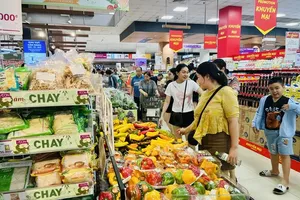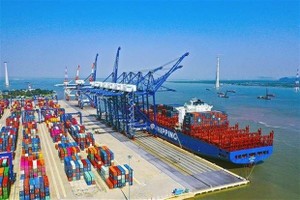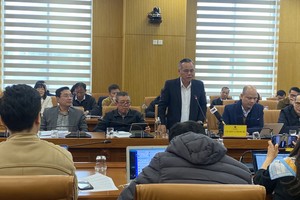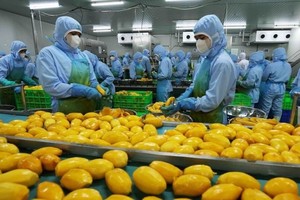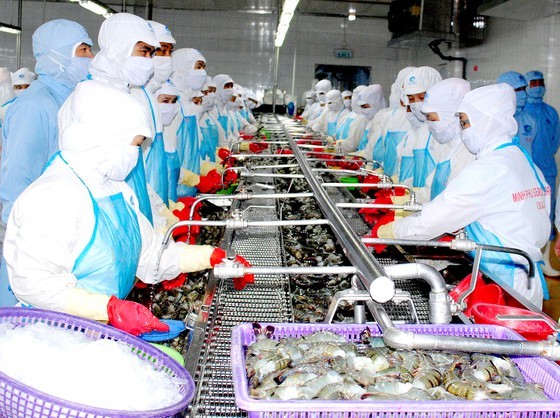
According to the Vietnam Association of Seafood Exporters and Producers (VASEP), shrimp exports in the first five months of this year had seen positive signals when the export turnover reached US$1.2 billion, up slightly by 2.3 percent over the same period last year. In the structure of exported shrimps, white-leg shrimps currently account for 69.5 percent of the total value, tiger shrimps account for 19.2 percent, and the rest are marine shrimps.
In particular, exports of processed white-leg shrimps (code HS16) and live/fresh/frozen white-leg shrimps (code HS03) increased by 13 percent and 5 percent over the same period, respectively; Other processed tiger shrimp exports (code HS16) increased by 18 percent, while live/fresh/frozen tiger shrimps (code HS03) decreased by 19 percent.
Due to the impacts of the Covid-19 pandemic, the situation of domestic consumption and shrimp exports decreased, some enterprises and traders reduced purchasing power or bought shrimps at low prices, leading to a sharp decline in shrimp prices. In particular, the price of raw tiger shrimps decreased by about 30 percent, while that of white shrimp decreased by about 15 percent.
At present, the price of tiger shrimps sized 20 pieces (pcs) per kg is VND170,000-VND180,000 per kg, down VND80,000 per kg over the same period; that of sized 40 pcs per kg is VND110,000-VND120,000 per kg, down VND40,000 per kg over the same period; the price of white-leg shrimps sized 90-100 pcs per kg raised in plastic-lined ponds is atVND87,000-VND89,000 per kg; the price of those raised in earthen ponds is at VND82,000-VND86,000 per kg. Due to falling shrimp prices, the income of tens of thousands of shrimp farmers in the Mekong Delta has been seriously affected.
Giving comments on Vietnam's shrimp export prospects in the coming months, the representative of VASEP said that the situation is expected to grow well because markets like the US and China still have the demand for aquatic products.
Also according to the VASEP, despite many positive signals, Vietnam’s shrimp exports are still facing various difficulties and challenges in both domestic and export markets. Therefore, enterprises need to focus on building the supply chains from farming to processing to control issues on food safety, as well as improve the competitiveness of products in the market.
Ca Mau is one of the largest shrimp exporting provinces in the country with an export turnover of over $1 billion per year. However, due to the influences of the Covid-19 pandemic, major partners requested to suspend import orders. The shrimp exports in the first six months of the province dropped sharply. Particularly, seafood exports (mainly shrimp) were estimated at $350 million, accounting for 30 percent of the plan, down nearly 15 percent over the same period. Similarly, shrimp exports of Kien Giang, Bac Lieu, and Soc Trang provinces also plummeted heavily.
At a recent meeting, Mr. Nguyen Tien Hai, Chairman of the People's Committee of Ca Mau Province, instructed relevant agencies to proactively contact the Ministry of Industry and Trade to get accurate judgments and firmly grasp the developments and the demand of domestic and international markets; at the same time, take advantage of the attention and the support of Vietnamese diplomatic agencies in foreign countries to promptly provide information to export enterprises.
Mr. Hai also asked related agencies to urge enterprises to diversify export markets, maintain regular and close contacts with existing importers, combined with seeking new markets, especially for items that are temporarily suspended export as Covid-19 affected partners rescheduled or canceled orders; actively take advantage of opportunities from free trade agreements that Vietnam has signed, especially the EVFTA and the CPTPP to diversify markets and boost exports.
Leaders of provinces and cities in the Mekong Delta such as Bac Lieu, Kien Giang, and Ben Tre provinces also directed to enhance production and guide people on shrimp farming techniques, especially measures to cope with unusual weather changes; promote intensive shrimp farming, super-intensive farming, and improved extensive farming; improve the effectiveness and accuracy of forecasting on the demand, and the market prices for each type of shrimps to guide farmers to produce effectively.
In particular, exports of processed white-leg shrimps (code HS16) and live/fresh/frozen white-leg shrimps (code HS03) increased by 13 percent and 5 percent over the same period, respectively; Other processed tiger shrimp exports (code HS16) increased by 18 percent, while live/fresh/frozen tiger shrimps (code HS03) decreased by 19 percent.
Due to the impacts of the Covid-19 pandemic, the situation of domestic consumption and shrimp exports decreased, some enterprises and traders reduced purchasing power or bought shrimps at low prices, leading to a sharp decline in shrimp prices. In particular, the price of raw tiger shrimps decreased by about 30 percent, while that of white shrimp decreased by about 15 percent.
At present, the price of tiger shrimps sized 20 pieces (pcs) per kg is VND170,000-VND180,000 per kg, down VND80,000 per kg over the same period; that of sized 40 pcs per kg is VND110,000-VND120,000 per kg, down VND40,000 per kg over the same period; the price of white-leg shrimps sized 90-100 pcs per kg raised in plastic-lined ponds is atVND87,000-VND89,000 per kg; the price of those raised in earthen ponds is at VND82,000-VND86,000 per kg. Due to falling shrimp prices, the income of tens of thousands of shrimp farmers in the Mekong Delta has been seriously affected.
Giving comments on Vietnam's shrimp export prospects in the coming months, the representative of VASEP said that the situation is expected to grow well because markets like the US and China still have the demand for aquatic products.
Also according to the VASEP, despite many positive signals, Vietnam’s shrimp exports are still facing various difficulties and challenges in both domestic and export markets. Therefore, enterprises need to focus on building the supply chains from farming to processing to control issues on food safety, as well as improve the competitiveness of products in the market.
Ca Mau is one of the largest shrimp exporting provinces in the country with an export turnover of over $1 billion per year. However, due to the influences of the Covid-19 pandemic, major partners requested to suspend import orders. The shrimp exports in the first six months of the province dropped sharply. Particularly, seafood exports (mainly shrimp) were estimated at $350 million, accounting for 30 percent of the plan, down nearly 15 percent over the same period. Similarly, shrimp exports of Kien Giang, Bac Lieu, and Soc Trang provinces also plummeted heavily.
At a recent meeting, Mr. Nguyen Tien Hai, Chairman of the People's Committee of Ca Mau Province, instructed relevant agencies to proactively contact the Ministry of Industry and Trade to get accurate judgments and firmly grasp the developments and the demand of domestic and international markets; at the same time, take advantage of the attention and the support of Vietnamese diplomatic agencies in foreign countries to promptly provide information to export enterprises.
Mr. Hai also asked related agencies to urge enterprises to diversify export markets, maintain regular and close contacts with existing importers, combined with seeking new markets, especially for items that are temporarily suspended export as Covid-19 affected partners rescheduled or canceled orders; actively take advantage of opportunities from free trade agreements that Vietnam has signed, especially the EVFTA and the CPTPP to diversify markets and boost exports.
Leaders of provinces and cities in the Mekong Delta such as Bac Lieu, Kien Giang, and Ben Tre provinces also directed to enhance production and guide people on shrimp farming techniques, especially measures to cope with unusual weather changes; promote intensive shrimp farming, super-intensive farming, and improved extensive farming; improve the effectiveness and accuracy of forecasting on the demand, and the market prices for each type of shrimps to guide farmers to produce effectively.
